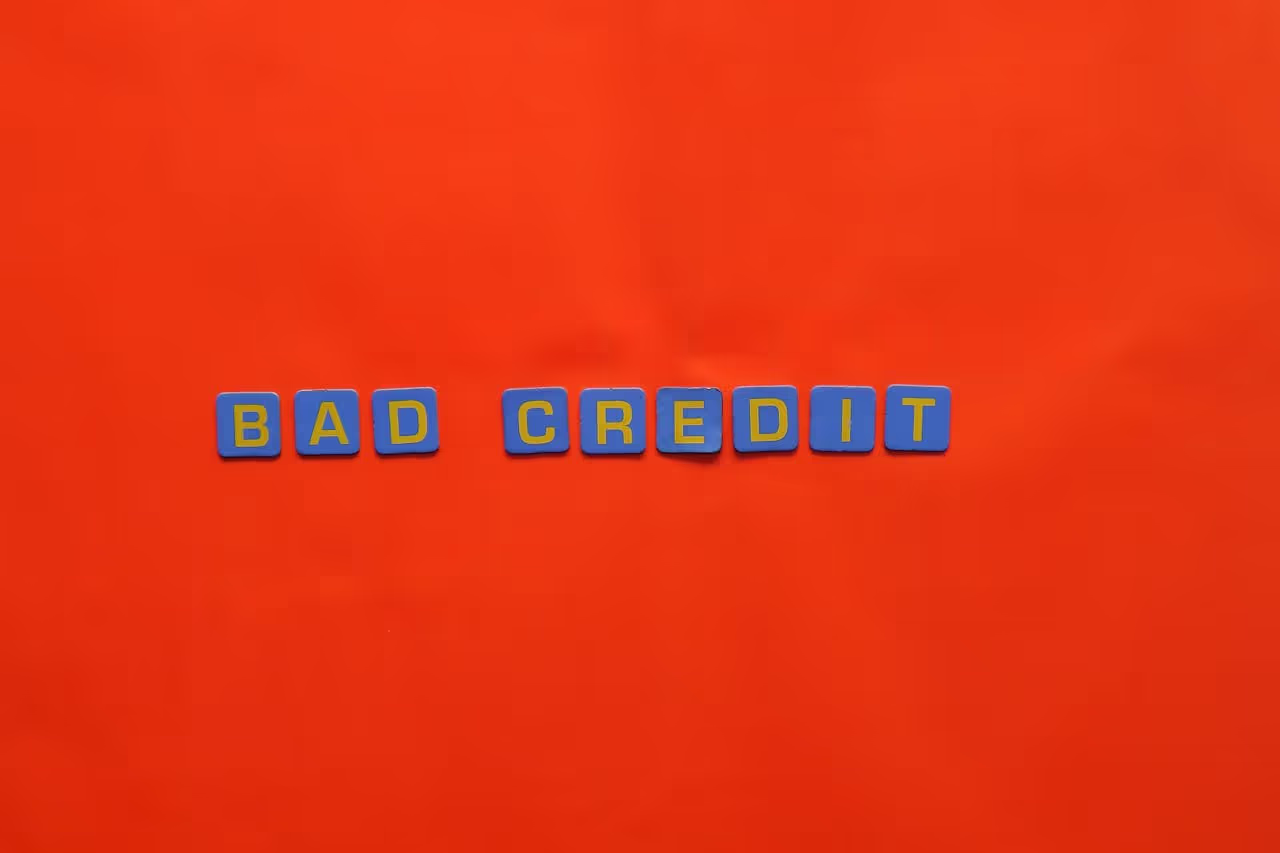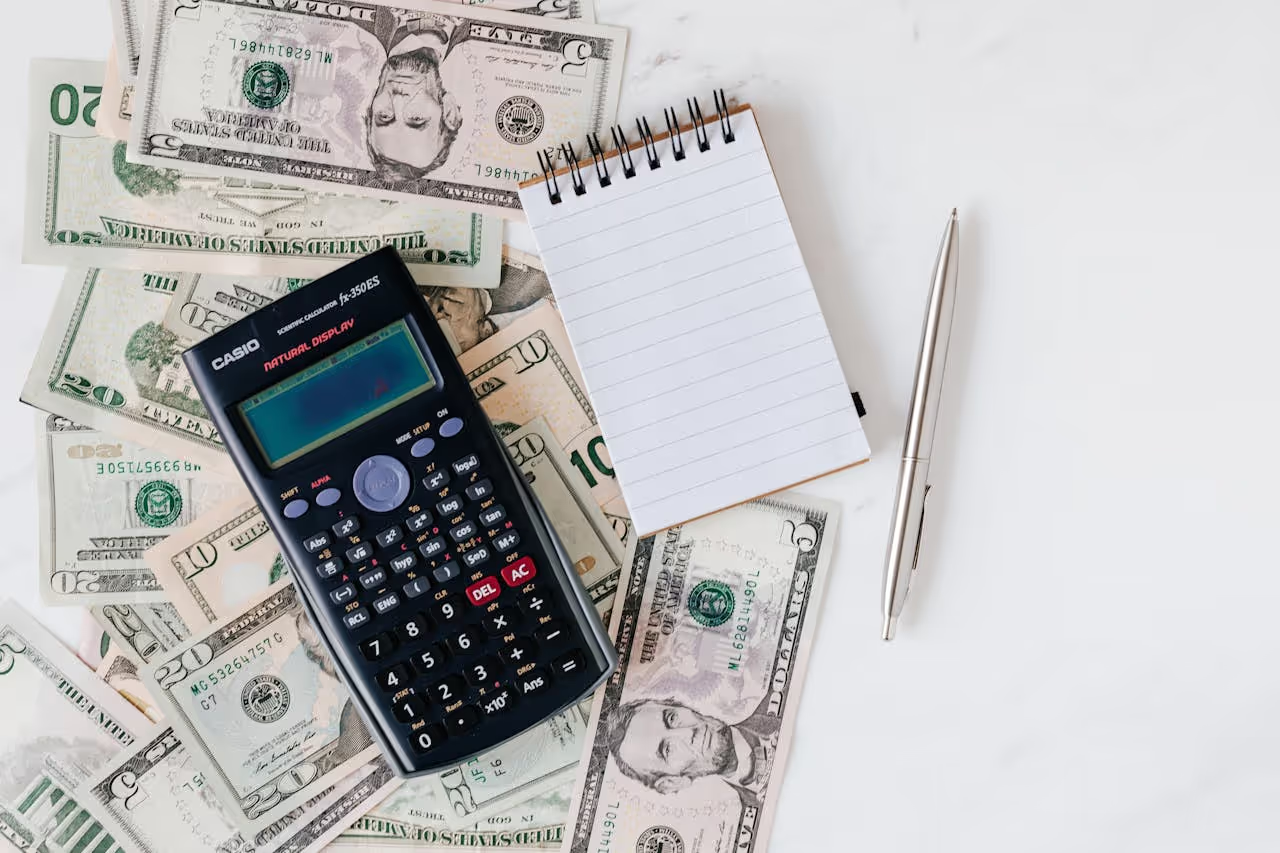Dealer Financing Secrets: 10 Car Dealer Scams and Hidden Dealer Fees
Maya thought she scored a fair deal on a new car. Then the finance office slid over a stack of forms with add-ons she never asked for, and a final price padded by hidden dealer fees she did not see coming.
If this sounds familiar, you are not alone. In 2025, with average new car prices hovering around $48,000 to $51,000, car dealer scams and quiet financing tactics are more common. Knowing the dealer financing secrets before you sign can save thousands and a lot of stress.
This guide breaks down the 10 things dealers rarely say out loud. You will see how the numbers move, where the pressure points are, and how to push back with confidence.
First up, dealer markup on car loans, how dealers make money on the rate you pay. Then the classic four-square method exposed, the worksheet trick that hides the real price by mixing payment, trade, cash down, and loan terms.
We will explain dealer reserve markup, the extra percent added to your approved rate. You will learn common extended warranty financing traps, like rolling a pricey plan into the loan and paying interest on it for years.
We cover the “yo-yo financing” scam, when you are told your loan fell through and you must accept worse terms. You will see gap insurance markups, often sold at two to four times its fair price.
Payment packing schemes will be decoded, where extras get tucked into your monthly payment without a clear line item. We will outline rate markup tactics, the quiet nudges that turn a good APR into an expensive one.
You will understand spot delivery risks, driving off before the lender fully approves you. We will also flag add-on product financing, from tire packages to theft etch, that balloon the total cost.
Finally, you will get a simple plan on how to protect yourself. By the end, you will know the moves, spot hidden dealer fees, and negotiate a cleaner deal with less hassle.
How Dealers Secretly Profit from Your Auto Loan Markup
 Image created with AI
Image created with AI
You negotiate the car price, then the finance office quietly adds cost to the interest rate. This is where many car dealer scams live. In 2025, with loan rates still high and credit a bit tighter, dealer financing secrets like rate markups can add thousands. These are not listed as hidden dealer fees on the buyer’s order, yet they inflate your total cost all the same.
What Is Dealer Reserve Markup and Why It Hurts You
Dealer reserve is the hidden profit a dealer earns by marking up the interest rate a lender approves for you. The lender sets a buy rate based on your credit score, term, and vehicle, the dealer quotes you a higher rate, and the dealer keeps part of that spread as commission.
Example: The lender approves you at 5%. The dealer quotes 7%. That 2% markup is dealer reserve. You pay the higher monthly payment, and the dealer pockets the difference through a built-in commission from the lender.
It is legal, but it is not transparent. The buy rate does not appear on your contract, so you rarely see the markup.
It hits bad credit buyers hardest, especially those seeking a bad credit auto loan. If your credit score is weak, the finance manager has more room to claim the higher rate is “the best you can get.”
It inflates the finance charge without a visible line item. That is why it fits with other car dealer scams and hidden dealer fees. You see the payment, not the reserve.
You can spot it by comparing offers:
Get a pre-approval from your bank or credit union.
Ask the dealer to beat that rate, not just match the payment.
Request the APR in writing before you step into the finance office.
If the dealer rate is higher than your pre-approval, you are likely looking at a reserve markup.
In today’s market, average rates hover around the mid 6% range for new and double digits for used. That gap gives a finance office room to add markup if you do not anchor with your own offer.
Interest Rate Markup Tactics Dealers Use to Boost Profits
Dealers partner with multiple lenders. Lenders set a buy rate based on your credit score, term, and vehicle. The dealer can present a higher rate and split the profit with the lender as a commission. With 2025 credit conditions a bit tighter and delinquencies up in some bands, many stores lean more on finance profit to hit goals.
How the money adds up on your auto loan:
On a $20,000 loan, a 2% markup often yields about $1,200 in dealer profit. That payout is tied to the amount financed and term. You also pay more interest over time with the higher APR.
On a $30,000 loan, that same 2% markup can mean around $1,800 to the store, plus higher total interest cost to you.
Common tactics you will see, particularly with bad credit car loans:
Bait and switch on rates. You see ads for “as low as” rates. At signing, you hear your credit did not qualify, and the APR jumps. Without a pre-approval, it is hard to push back.
Payment focus. The finance manager keeps the talk on monthly payment, not APR or total interest. A longer term plus a higher rate keeps the payment close to your target while you overpay.
Last-minute add-ons. The rate looks fair until add-ons get folded in. Now the amount financed is higher, and the higher rate multiplies the damage.
Quote the rate, not the buy rate. They will not mention the lender’s original approval. That silence is the secret.
Your best play is simple and strong:
Get bank or credit union pre-approval before you visit the lot. This is your guardrail against markups.
Ask the dealer to beat your APR, not just your payment.
Lock term and APR first, then decide on add-ons. Do not roll extras into the loan without checking the new APR and total interest.
Read the Retail Installment Sales Contract. Confirm the APR and that no “rate bump” appeared at the table.
When rates are high, reserve bites harder. In 2025, many buyers face high interest rates of 6 to 7 percent on new car APRs and much higher on used. That makes every extra percentage point expensive. Treat the APR like the price of money. Anchor it with a pre-approval, ask the dealer to beat it, and refuse any surprise markup at signing. This is how you avoid dealer financing secrets that drain your budget.
Sneaky Sales Tricks Like the Four-Square Method and Yo-Yo Financing
 Image created with AI
Image created with AI
Some car dealer scams hide in plain sight when you're trying to buy a car. The worksheet looks simple, the payment sounds fair, and the pen keeps moving. In 2025, the four-square method and yo-yo financing still trip up buyers, and both tie back to dealer financing secrets and hidden dealer fees. Here is how they work, why they cost you, and what to do instead.
The Four-Square Method Exposed: How Dealers Confuse You
The four-square is a classic in the finance office. A salesperson draws a box with four squares, then fills in numbers for price, trade, down payment, and monthly payment. It feels like you are negotiating everything at once. That is the trap.
How it hides the true cost:
The focus shifts to the monthly payment, not the total price.
The seller moves numbers between the squares to meet your target without lowering the real price.
Add-ons and hidden dealer fees get folded into the payment, so you do not see them line by line.
A simple example:
Sticker price: $28,000
You say you want a $400 payment with $2,000 down payment and a $6,000 trade.
The salesperson writes:
- Price: $27,995
- Trade value: $6,500
- Down: $2,000
- Payment: $399
Price: $27,995
Trade value: $6,500
Down: $2,000
Payment: $399
Looks good, right? Behind the page:
They stretched the loan terms from 60 to 84 months to hit $399.
They added a $599 documentation fees, $299 VIN etch, $899 paint protection, and a $1,995 extended service plan.
Total amount financed jumps to $26,197 at 8.49%, and you pay thousands more in interest over a longer term.
Why dealers use it in 2025:
It keeps you focused on the payment while they sell add-ons.
It helps pack products into the loan without a clean “yes” from you.
It buries hidden dealer fees in the financed amount.
How to beat it:
Anchor on the out-the-door price, not the payment.
Lock the term and APR, then discuss extras separately.
Ask for a clean buyer’s order with every line item.
Use a calculator and write down totals for each change. If a number moves, ask which other number changed to make it happen.
Pro tip: Bring your own worksheet. One column for price only, one for taxes and fees, one for APR and term, one for optional add-ons at cash prices. Keeping the buckets separate kills the four-square shuffle.
Yo-Yo Financing Scam: Why Dealers Call You Back After You Leave
Yo-yo financing happens when a dealer lets you drive off, then calls later saying your loan “did not get approved.” You are told to return and sign a new contract with worse terms, or give the car back. It targets excited buyers who think the deal is final.
What it looks like in real life:
You leave the lot with plates and a smile. Days later, the call comes.
The new offer requires a higher rate, a larger down payment, or a co-signer.
Some buyers report threats of repossession or losing their deposit if they refuse.
Consumer stories and lawsuits continued into 2025, including reports of buyers pressured to accept steeper APRs and pay add-on fees a second time.
Why it is predatory:
It preys on your sunk costs, like returning accessories or explaining to family that the car is gone.
It forces decisions under stress, after you already committed.
It often hinges on loan paperwork that was “conditional,” not final.
Protect yourself before it starts:
Do not sign or drive off until you have written approval from the actual lender. Ask for the lender name and a loan reference number.
Get a bank or credit union pre-approval. It cuts off the yo-yo because you already have funding.
Refuse to sign “spot delivery,” “conditional delivery,” or “we owe” forms tied to financing approval.
Keep copies of everything you sign. Save texts and emails.
If pressured, keep calm, ask for all requests in writing, and record calls where legal. Many states allow one-party consent, but verify your state’s rules first.
If it happens to you:
Do not sign a new contract on the spot. Ask for time to review.
Tell them you will return the car only after you get your trade, deposit, and all personal items back, and after you receive written notice canceling the original deal.
Contact your lender or credit union to fund the purchase directly at your approved rate.
Consult a consumer attorney if you face threats or fees that were not in your signed contract.
Yo-yo financing is one of the most common car dealer scams tied to dealer financing secrets. It often brings hidden dealer fees back into play when they rewrite the deal.
Spot Delivery Risks: Don't Drive Off Without Final Approval
 Image created with AI
Image created with AI
Spot delivery means the dealer lets you take the car “on the spot” before a lender fully approves your loan. It is the on-ramp to yo-yo financing. In 2025, auto lending fraud risk is elevated, and lenders are tougher on approvals. That creates more chances for callbacks and surprise terms if you leave without final approval in writing.
Why spot delivery bites buyers:
Terms can change after you drive away. You may face a higher APR, more money down, or a longer term.
Dealers sometimes add fees or pack extras when they redraw the contract. Those hidden dealer fees show up only after you return.
Your trade payoff or registration may be delayed, which adds pressure to accept new terms.
Red flags to watch for:
You get only a conditional delivery slip, not a full contract with an APR and lender listed.
The finance manager says “everything is good,” but cannot name the lender or show a final approval.
You are told to sign blank fields or “we will fill it in later.” Never do it.
Smart steps that stop the risk:
Ask for the lender name, the APR, the term, and an approval number before you take the keys.
If they cannot provide these, pause the delivery or use your own pre-approved loan.
Refuse to accept add-ons that are bundled into the loan by default. If you want a product, price it in cash.
Insist on a complete buyer’s order and a copy of every page you sign before leaving the lot.
Bottom line: Do not let a temporary tag and a handshake replace a real approval. Spot delivery gives the dealer leverage to change the deal later. Waiting a day for written approval can save you from inflated APRs, payment packing, and hidden dealer fees that haunt your budget.
Hidden Fees and Add-On Traps in Dealer Financing
 Image created with AI
Image created with AI
Dealers make big profits by rolling extras into your loan. These are not labeled as hidden dealer fees, but you still pay for them with interest. Spotting these car dealer scams and knowing the dealer financing secrets behind them keeps your total cost honest.
Extended Warranty Financing Traps That Cost You Extra
Extended warranties are often pitched as smart protection, then financed at a steep markup. The issue is not the product itself, it is the loan math. A $2,000 plan rolled into a 72-month auto loan at a higher APR can cost $3,000 or more over time.
Example: Warranty sold for $2,000, financed for 72 months at 8%. Total with interest easily tops $3,000.
Many experts estimate that up to 80% of these plans are unnecessary, especially on reliable models still under factory coverage.
Finance offices lean on payment talk. “It is only $28 a month” hides the true cost over years.
What to do:
Skip it at signing unless you truly need it. If you want coverage, buy it later from the manufacturer or a reputable third party, and pay cash when possible.
Compare plan terms and deductibles. Many exclusions limit real-world value.
Confirm coverage length versus your loan term. You do not want to pay for protection that expires while you are still paying off the car.
Gap Insurance Markups: Overpriced Protection You Might Not Need
Gap insurance covers the difference between what your insurer pays if the car is totaled and what you still owe. Useful in some cases, yes. But dealers often charge 200 to 300 percent markups and then roll the cost into your loan, so you pay interest on it.
In 2025, used car values continue to soften, which can raise negative equity risk. Dealers use that fear to sell gap at inflated prices.
Many auto insurers offer gap or loan/lease payoff for $20 to $40 a year, or a one-time $200 to $300 through third parties. Dealers often quote $500 to $900, sometimes more.
Smart checks:
Ask your auto insurer if your policy already includes loan/lease payoff. Some plans make dealer-sold gap redundant.
If your down payment is 20% or more, your term is 60 months or less, and you are not rolling negative equity into the new loan, you may not need it.
If you still want gap, price it outside the dealership and avoid financing it.
Payment Packing Schemes: Sneaky Ways to Hide Extra Costs
Payment packing hides extras by focusing you on monthly payment rather than total price. The finance manager slides in add-ons, then stretches the term to keep the payment near your target.
Example: Add $500 in “fees” and spread it over 72 months at 8%. It looks like a tiny bump per month, but you pay far more by the end.
The tactic masks dealer financing secrets because you never approve the add-on as a separate line item.
How to protect yourself:
Insist on the out-the-door price first. That number should include taxes, title, registration, and only mandatory fees.
Lock APR and term before discussing any products. If you add something, re-check the total and the APR.
Ask for a fresh buyer’s order each time a number changes. If they resist, that is your sign to pause.
Add-On Product Financing: Rustproofing and More That Drain Your Savings
Many add-ons sound helpful, but they are often overpriced, unnecessary, or already included. Common pitches include rustproofing, fabric protection, nitrogen tires, window tint, and VIN etching. In 2025, multiple reports flag these as poor value, and some “protections” are little more than a spray bottle and a sticker.
Dealers earn commissions on these items, so they present them as must-haves. The markup can be massive when financed.
VIN etching is a frequent example. You can often find it locally for far less, or insurers may not even discount for it.
“Paint sealant” and “fabric guard” are usually cheap products sold at luxury prices.
Your move:
Research every add-on before you sign. Most buyers can decline nearly all of them without any downside.
If you want an item, buy it later and pay cash. Avoid rolling small add-ons into a long loan.
Ask for documentation proving what is installed, the actual cost, and what problem it solves. If the answer is vague, pass.
Key takeaway: Keep the focus on the out-the-door price, not the monthly payment. Say no to packed products, overpriced gap, and financed warranties. That is how you avoid the worst car dealer scams, dealer financing secrets, and hidden dealer fees that drain your budget. If you're already stuck with high loan costs from these traps, consider refinance options to lower your interest and regain control.
How to Protect Yourself from Dealer Financing Secrets and Scams
 Image created with AI
Image created with AI
You have read how car dealer scams and dealer financing secrets inflate the price you pay. Now shift from reactive to proactive, starting with understanding your credit score. The moves below help you spot hidden dealer fees, anchor your rate, and keep the contract clean. Small steps before you shop make the finance office simple.
Get Pre-Approved and Know Your Numbers Before Visiting
Start by prequalifying with your bank or credit union through a loan application. Get a pre-approval that shows the rate, term, and max loan, boosting your approval odds. Use it as your benchmark. When the dealer pitches financing, ask them to beat your rate, not your monthly payment. This shuts down quiet rate markups.
Build your budget on total cost, not just the payment. Add purchase price, taxes, unavoidable fees, and full interest over the term. A quick example helps: A $30,000 loan at 6.5% for 60 months with $3,000 down will cost several thousand in interest. Seeing the all-in number keeps you from stretching the term to chase a lower payment that costs more overall.
Avoid buy here pay here lots. Rates there are often sky high and the contracts come with strict terms. Even if you're a high risk borrower with credit challenges, a local bank or credit union usually offers a fairer rate and clearer terms.
Lock in your plan before you step onto the dealership:
Review your credit history, then fix errors and pay down small balances to improve your credit score.
Get at least two pre-approvals to shop around and compare offers.
Set a firm out-the-door budget and a max term you will not exceed.
Decide your down payment to keep the amount financed low.
This is your shield. You control the numbers, not the salesperson. Most car dealer scams lose power when you arrive with a real offer in hand.
Always Demand an Itemized List of Fees and Terms
Ask for everything in writing before you sign. Request an itemized buyer’s order with every line listed: price, trade value, discounts, all fees, APR, term, and total finance charge. This pulls hidden dealer fees into the open.
Scrutinize doc fees and prep charges. Some are routine, but many are padded or duplicated under new names. Use this 2025 rule of thumb: the only truly mandatory charges are taxes, title, and registration. Everything else is optional or negotiable. If a fee sounds vague or repetitive, question it or ask for removal.
Keep the focus on the APR, not the payment. Payments hide add-ons. The APR and the amount financed reveal them. If the dealer quotes a payment, ask them to show the math and list each product included. Decline products you did not request.
Make clarity your standard procedure:
Get a printed buyer’s order with every fee spelled out.
Compare fees against your state’s typical charges.
Calculate the out-the-door price yourself and verify it matches.
Pause the deal if anything is rushed or unclear.
These habits shut down dealer financing secrets and expose car dealer scams before they land in your contract. You save money, avoid junk add-ons, and sign with confidence, without surprise hidden dealer fees buried in the fine print.
Conclusion
You have seen the full playbook on car loans. Dealer markup on your car loan, how dealers make money on the rate. The four-square method exposed, where payment focus hides price. Dealer reserve markup explained, the hidden spread between buy rate and your contract rate. Extended warranty financing traps, small monthly bumps that cost big over time. The yo-yo financing scam, a call back that demands worse terms. Gap insurance markups, pricey add-ons you can often buy cheaper. Payment packing schemes, extras tucked into a stretched term. Rate markup tactics, soft nudges that inflate interest. Spot delivery risks, driving off without final approval. Add-on product financing, high-margin items rolled into your loan.
Knowledge blocks car dealer scams, dealer financing secrets, hidden dealer fees. The moves that surprised Maya no longer surprise you. Anchor with pre-approval, insist on the out-the-door price, and keep your APR and term locked. If you've ended up with a poorly structured loan, consider options to refinance for better terms. Read every line, decline what you do not need, and keep copies. In 2025, a clear plan can save thousands.
Share your experience in the comments, your story helps others. Get pre-approved today and shop with confidence. Stay sharp, enjoy the car, and keep your money in your pocket.





